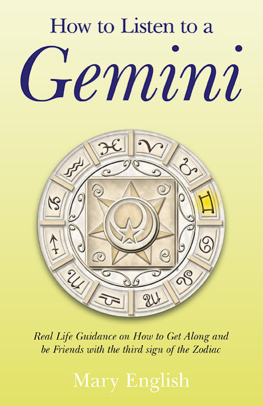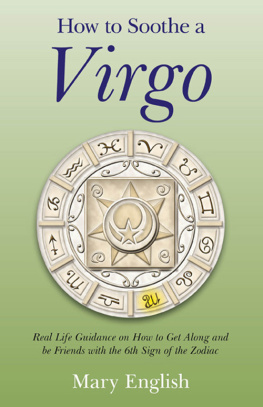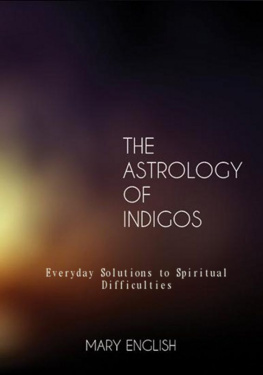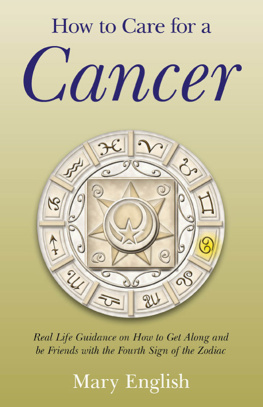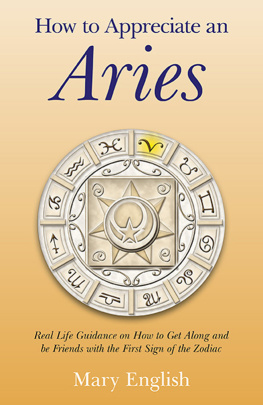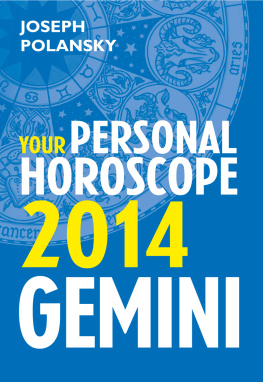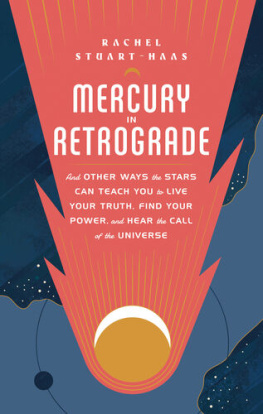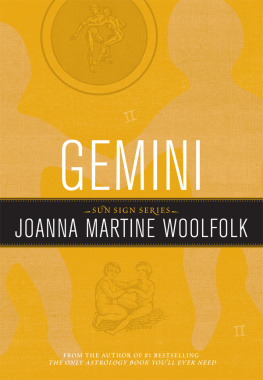My son for being the Libran that makes me always look on the other side.
My Taurus husband Jonathan for being the most wonderful man in the world.
Mabel, Jessica and Usha for their Homeopathic help and understanding.
Mandy for her friendship.
Donna Cunningham for her help and advice.
Judy Hall for her inspiration.
Alois Treindl for being the Pisces that founded the wonderful Astro.com website.
Judy Ramsell Howard at the Bach Centre for her encouragement.
John my publisher for being the person that fought tooth and nail to get this book published, and all the staff at O-Books including Stuart, Trevor, Kate, Nick, Krystina, Catherine, Maria, Elizabeth and Mary.
Victoria, Oksana, Ursula, Mary and Alam for their welcome editing eyes.
And last but not least my lovely clients for their valued contributions.
Introduction
Why the title of this book?
This book is part of a series of Sun sign books, written to help you understand the people in your life. I started at the end of the Zodiac, with How to Survive a Pisces, because I am one and I went backwards through the Zodiac. Im now on my 10th book, about the 3rd sign. Confused? Imagine what it must be like to be me!
I started this book one wild and windy autumn day, with the wind whistling down the chimney in my office and the rain bashing against the front of the house. Not exactly positive weather. After a few moments, the rain moved away and the Sun came out. This is similar to the energies of Gemini. The Twins. The positive and the negative, the good and the bad, the happy and the sadGemini has them both.
Thats what we need to do when we learn Astrology.
First we learn about ourselves, then we learn about the people nearest to us, then when our confidence grows, we learn about the wider population.
To understand a little better about how Astrology got to where it is today, it helps to learn a bit about its history.
A Brief History of Astrology
Christopher McIntosh, a historian, tells us in his The Astrologers and Their Creed that Astrology was discovered in what is now called the Middle East, Iraq:
It was the priests of the kingdom of Babylonia who made the discovery, which set the pattern for the development of astronomy and of the zodiacal system of astrology that we know today. For many generations they had been meticulously observing and recording the movements of the heavenly bodies. Finally they had, by careful calculation, discovered that there were, besides the Sun and the Moon, five other visible planets which moved in established courses through the sky. These were the planets that we now call Mercury, Venus, Mars, Jupiter and Saturn.
The discovery which these priest-astronomers made was a remarkable one, considering how crude were the instruments with which they worked. They had no telescopes, nor any of the complicated apparatus, which astronomers use today. But they did have one big advantage. The area, next to the Persian Gulf, on which their kingdom lay, was blessed with extremely clear skies. In order to make full use of this advantage they built towers on flat areas of country and from these were able to scan the entire horizon.
These priests lived highly secluded lives in monasteries usually adjacent to the towers. Every day they observed the movements of the heavenly spheres and noted down any corresponding earthly phenomena from floods to rebellions. Very early on they had come to the conclusion that the laws which governed the movements of the stars and planets also governed events on Earth. The seasons changed with the movements of the Sun, therefore, they argued, the other heavenly bodies must surely exercise a similar influence
In the beginning the stars and planets were regarded as being actual gods. Later, as religion became more sophisticated, the two ideas were separated and the belief developed that the god ruled the corresponding planet.
Gradually, a highly complex system was built up in which each planet had a particular set of properties ascribed to it. This system was developed partly through the reports of the priests and partly through the natural characteristics of the planets. Mars was seen to be red in colour and was therefore identified with the god Nergal, the fiery god of war and destruction.
Venus, identified by the Sumerians as their goddess Inanna, was the most prominent in the morning, giving birth, as it were, to the day. She therefore became the planet associated with the female qualities of love, gentleness and reproduction.
The observation of the stars by the Sumerians was mostly a religious act. The planets were their gods and each visible object was associated with an invisible spiritual being that judged their actions, blessed them with good fortune or sent them tribulations.
Astrology was therefore born out of careful observation and also a desire by the Sumerians to add meaning to their lives. At first it was for a practical purpose, to help their crops, and then it developed into one that was spiritual, and thousands of years later Astrology is still with us.
Definition of Astrology
Astrology is the study of the planets but not in the astronomical sense. Astrologers look at the planets and record where they are from the viewpoint of the Earth, and divide the sky into 12 equal portions. Those portions start at the Spring Equinox of 0 Aries. We use astronomical information but the difference between astronomy and Astrology is that Astrologers use this astro- nomical information for a different purpose. Originally astronomers and Astrologers were the same species, but as science progressed astronomers broke away and focused only on the planets themselves, not on their meaning. Astrologers believe that we are all connected.

